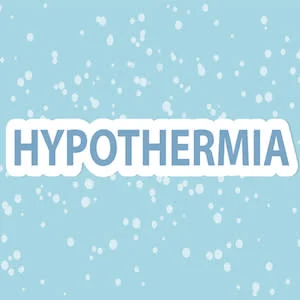Since 2005, the guidelines for the care of unconscious cardiac arrest patients have been to cool the body temperature down to 33 degrees Celsius. However, findings from a large, randomised clinical trial led by Lund University and Region Skåne in Sweden show that this treatment does not improve survival.
"These results will affect the current guidelines", says Niklas Nielsen, researcher at Lund University and
consultant in anaesthesiology and intensive care at Helsingborg Hospital, who led the study.
In the early 2000s, findings from two studies showed that induced hypothermia in unconscious cardiac arrest patients improved patient survival. The studies changed existing treatment practices and led to the introduction of new guidelines around the world. However, the evidence for the guidelines was considered by many to be weak. As a result, a large international randomised clinical trial was initiated and led by researchers at Lund University and Helsingborg Hospital.
The results of the comprehensive study, now published in the New England Journal of Medicine, show that hypothermia does not reduce mortality in unconscious patients with suspected cardiac arrest.
"It is important to set high standards for clinical studies, partly to determine what should be introduced in healthcare, partly to challenge the practices that are already in use - to ensure that we have got it right and that healthcare is evidence-based. The results produced strongly indicate that normal temperature should be recommended, not hypothermia", says Niklas Nielsen.
In total, 1900 adult patients who suffered cardiac arrest and were unconscious when admitted to the hospital were included in the study. Between November 2017 and January 2020, a total of 61 hospitals around the world participated in the study. The patients included in the study had suffered unexpected out-of-hospital cardiac arrest.
Patients were randomised into two groups. In one group, the patients were cooled down to 33 degrees, which was maintained for 28 hours. In the second group, the patient's body temperature was monitored, and the patients who developed a fever were treated with the same method of temperature control but kept at a normal temperature.
Researchers followed up on survival rates for patients six months after receiving care for cardiac arrest. They also investigated how functionality in everyday life was affected in the surviving patients.1850 patients were included in the analysis. Six months after the patients suffered the cardiac arrest, a total of 465 of 925 participants in the group who were induced with hypothermia died. In the normothermia group, 446 out of 925 died. A slightly increased risk of impact on blood circulation and cardiac arrhythmia was observed in the group treated with hypothermia.
One thousand seven hundred forty-seven patients were included in the analysis of patients' ability to function in everyday life. In the group treated with hypothermia, 55% either died or had a severe functional impairment six months later compared to 55% in the normothermia group.
"The results are important but not unexpected. For 20 years, we have applied and believed in these practices, which we now see do not make a difference for survival. Now we can use the resources on other things, and prioritise other aspects of the acute phase of cardiac arrest", says Josef Dankiewicz, researcher at Lund University and resident physician at Skåne University Hospital, and first author of the study.
Source: NEJM
Image Credit: iStock








